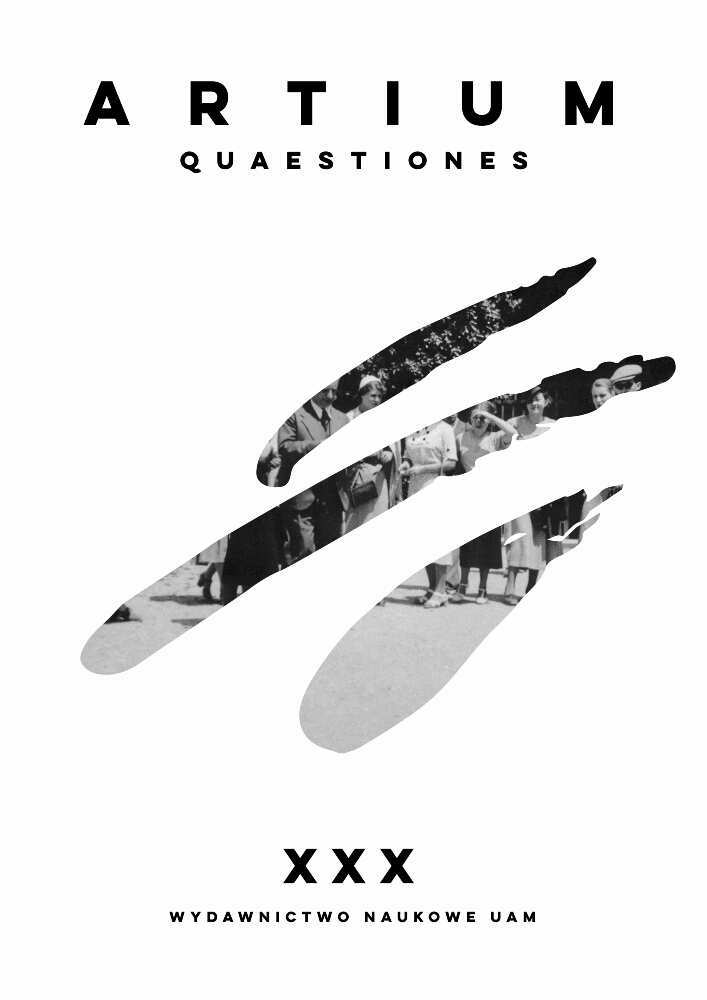Abstract
The author argues that the significance of the year 1989 for Polish art was not determined by political changes, but by the rise of postmodernism. Until that moment, the term “modernism” usually referred in academic art history to Polish art at the turn of the 20th century. The concept of postmodernism brought to the Polish language a new meaning of modernism as simply modern art, and more precisely, as modern art defined by Clement Greenberg. That change made it necessary to draw a new map of concepts referring to modern Polish art, most often defined before by the concept of the avant-garde. In Mieczysław Porębski’s essay “Two Programs” [Dwa programy] (1949), and then, since the late 1960s, in Andrzej Turowski’s publications, the concept of the avant-garde was acknowledged as basic for understanding twentieth-century Polish art. The significance of the concept of the avant-garde in reference to the art of the past century in Poland changed after the publication of Piotr Piotrowski’s book of 1999, Meanings of Modernism [Znaczenia modernizmu]. Piotrowski challenged in it the key role of that concept – e.g., Władysław Strzemiński and Henryk Stażewski, usually called avant-gardists before, were considered by him modernists – in favor of a new term, “critical art,” referring to the developments in the 1990. In fact, critical art continued the political heritage of the avant-garde as the radical art of resistance. The author believes that such a set of terms and their meanings imposes on the concept of the avant-garde some limits, as well as suggests that scholars and critics use them rather inconsistently. He argues that concepts should not be treated as just label terms, but they must refer to deeper significance of tendencies in art. He mentions Elżbieta Grabska’s term “realism,” also present in the tradition of studies on modern Polish art, and concludes with a postulate of urgent revision of the relevant vocabulary of Polish art history.
References
Bal M., Traveling Concepts in the Humanities. A Rough Guide, Toronto 2002
Borowski W., “Pseudoawangarda,” Kultura 1975, 12
Bryl M., Suwerenność dyscypliny. Polemiczna historia historii sztuki od 1970 roku, Poznań 2008
Bürger P., Teoria awangardy, Kraków 2005
Domańska E., “Jakiej metodologii potrzebuje współczesna humanistyka?” Teksty Drugie 2010, 1–2
Foster H., “O idei sztuki politycznej,” trans. E. Mikina, Magazyn Sztuki 1994, 4
Giżycki M., Postmodernizm – kultura wyczerpania?, Warszawa 1988
Grabska E., “Moderne” i straż przednia. Apollinaire wśród krytyków i artystów 1900–1918, Kraków 2003
Groys B., Gesamtkunstwerk Stalin, München 2008
Jencks Ch., Architektura postmodernistyczna, trans. B. Gadomska, Warszawa 1987
Juszczak W., Teksty o malarzach. Antologia polskiej krytyki artystycznej 1890–1918, Ossolineum 1976
Kluszczyński R., Awangarda – rozważania teoretyczne, Łódź 1997
Koselleck R., Begriffsgeschichten. Studien zur Semantik und Pragmatik der politischen und sozialen Sprache, Berlin 2011
Malarstwo polskie, Modernizm, eds. W. Juszczak, M. Liczbińska, Warszawa 1977
Markowska A., Definiowanie sztuki – objaśnianie świata. O pojmowaniu sztuki w PRL-u, Katowice 2003
Morawski S., Na zakręcie od sztuki do po-sztuki, Kraków 1985
Odkrywanie modernizmu, ed. R. Nycz, Kraków 1998
Olszewski A., Nowa forma w architekturze polskiej 1900–1925. Teoria i praktyka, Wrocław 1967
Orska J., Przełom awangardowy w dwudziestowiecznym modernizmie w Polsce, Kraków 2004
Piotrowski P., Znaczenia modernizmu. W stronę historii sztuki polskiej po 1945 roku, Poznań 1999
Piotrowski P., “O horyzontalnej historii sztuki,” Artium Quaestiones 2009, 20, pp. 59–73
Piotrowski P., In the Shadow of Yalta. Art and the Avant-Garde in Eastern Europe 1945–1989, trans. A. Brzyski, London 2011
Piotrowski P., Globalne ujęcie sztuki Europy Wschodniej, Poznań 2018
Porębski M., “Dwa programy (z problematyki formalizmu w plastyce polskiej dwudziestolecia międzywojennego),” Materiały do Studiów i Dyskusji z Zakresu Teorii i Historii Sztuki, Krytyki Artystycznej oraz Metodologii Badań nad Sztuką 1950, 1, pp. 51–76
Przybylski R., Klasycyzm, czyli prawdziwy koniec Królestwa Polskiego, Warszawa 1983
Sławiński J., Koncepcja języka poetyckiego awangardy krakowskiej, Wrocław 1965
Spychalski M., “Na straży awangardy,” Odra 2014, 4
Sztuka polska po 1945 roku. Materiały Sesji Stowarzyszenia Historyków Sztuki, Warszawa, listopad 1984, ed. T. Hrankowska, Warszawa 1987
Turowski A., W kręgu konstruktywizmu, Warszawa 1979
Turowski A., Konstruktywizm polski. Próba rekonstrukcji nurtu (1921–1934), Wrocław 1981
Turowski A., Wielka utopia awangardy: artystyczne i społeczne utopie w sztuce rosyjskiej 1910–1930, Warszawa 1990
Turowski A., Awangardowe marginesy, Warszawa 1998
Turowski A., Budowniczowie świata. Z dziejów radykalnego modernizmu w sztuce polskiej, Kraków 2000
Turowski A., Parowóz dziejów, Warszawa 2012
Włodarczyk W., Socrealizm. Sztuka polska w latach 1950–1954, Paryż 1986
Włodarczyk W, “Kiedy zaczęło się ‘dzisiaj’? O źródłach sztuki polskiej lat dziewięćdziesiątych,” in: Sztuka dzisiaj, Warszawa 2002
Włodarczyk W., “Pięć lat,” in: Zaraz po wojnie, eds. J. Kordjak, A. Szewczyk, Warszawa 2015
Włodarczyk W., “Artysta nowoczesny jako t.w.,” Miejsce. Studia nad sztuką i architekturą XX i XXI wieku 2015, 1, pp. 89–108
Wybory i ryzyka awangardy. Studia z teorii awangardy, eds. U. Czartoryska, R. W. Kluszczyński, Warszawa–Łódź 1985, pp. 7–26
License
Copyright (c) 2019 Wojciech Włodarczyk

This work is licensed under a Creative Commons Attribution-NonCommercial-NoDerivatives 4.0 International License.
The copyrights are regulated by author's statement and publication agreement prepared by Adam Mickiewicz University Press. The authors are responsible for the originality of texts published and regulating the copyrights of accompanying visual materials, unless the materials come from the Editorial Team.
This work is available with the following licence: Attribution-NonCommercial-NoDerivatives 4.0 International License
Attribution-NonCommercial-NoDerivatives 4.0 International License
